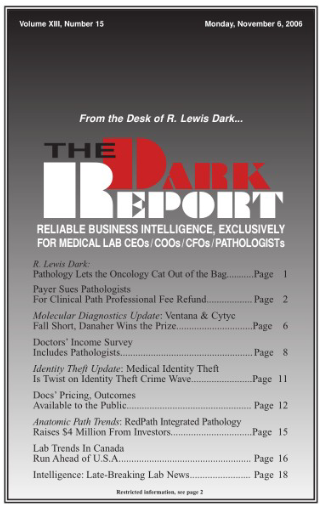WHEN Danaher Corporation’s high bid for Vision Systems Limited of Melbourne, Australia, was accepted last month, it appeared to be simply another acquisition by a large U.S. manufacturer. But, in fact, there are four reasons this transaction is significant to pathologists in the United States and worldwide. If approved by Vision’s shareholders later this year, …
Ventana & Cytyc Fall Short, Danaher Wins the Prize Read More »
To access this post, you must purchase The Dark Report.


